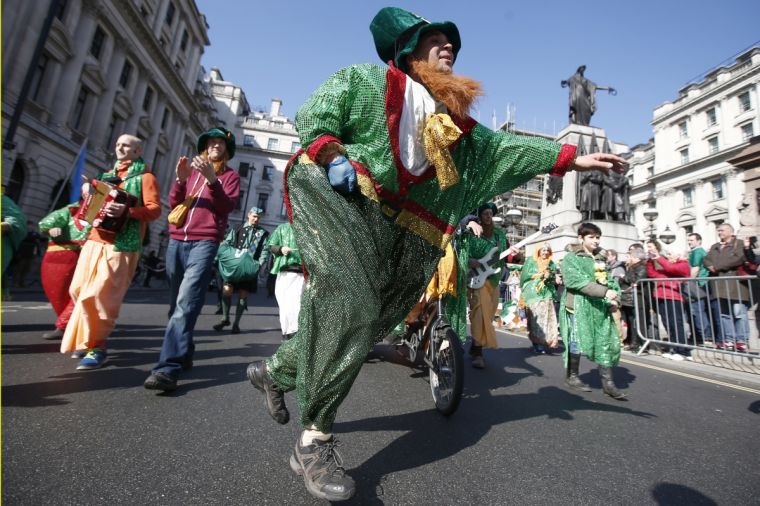The man who converted Ireland: 10 things you might not know about St Patrick

St Patrick is the patron saint of Ireland, as all the world knows. St Patrick's Day processions are big events, particularly in America, as descendants of Irish emigrants everywhere reconnect with their roots. But who was St Patrick, and what should we remember about him?
1. He has lots of fans
Even though hard information about him is quite hard to come by, including his dates; the 5th century is as precise as it gets. On the other hand, he was a terrific evangelist and totally fearless, leaving the safety of his home to face beatings, imprisonment and opposition from druids, kings and pretty much everyone to establish the Christian Church in Ireland.
Beyond all the usual kitsch, #StPatrick was the greatest missionary Christianity had known since #StPaul, leaving the safety of the Empire.
— Arch Mark Coleridge (@ArchbishopMark) March 17, 2016
2. There may have been two of him
Die-hard Patrick fans might be outraged by this, but some of the stories associated with him might originally have been about Palladius, who was sent by Pope Celestine 1 as the first bishop to Irish Christians in 431. Not for nothing are these called the Dark Ages; it's all very confusing.
3. He was born in either England, Scotland or Wales
More vagueness: no one's quite sure, but it wasn't Ireland. It might have been Cumbria. We're pretty sure he was captured by pirates and taken to Ireland as a slave at the age of 16. Six years later he escaped and returned home. He went back to Ireland as a missionary.
4. He's the reason there are no snakes in Ireland
Patrick banished them after they attacked him during a 40-day fast. That's the story; disappointingly, naturalists say there were never any there in the first place.
5. His walking stick became a living tree
He used to stick it in the ground whenever he stopped to preach; on one occasion he took so long that it took root. In Catholic piety saints tend to take on responsibility for particular jobs or people groups. However, Patrick is not the patron saint of long-winded preachers. The place is called Aspatria or 'Ash of Patrick'.

6. He met two ancient Irish folk-heroes
He talked to Cailte mac Ronain and Oisin, in theory both long dead, and tried to convert them without success. They enjoyed fighting and feasting too much.
7. Patrick killed a large sea serpent
He despatched it on Loch Dearg ('Red Lake') and its blood turned the water red. Again, naturalists have queried this account on a number of grounds.
8. He lit a bonfire no one could put out
On the Hill of Slane in County Meath he lit an Easter bonfire in defiance of High King Laoire. No one could put it out except Patrick. It may not have happened exactly like that, but it's a great story.
9. We still have his bell
St Patrick's Bell is kept in the National Museum of Ireland. First mentioned in 552 AD, it was removed from his tomb after his death. It really is his, which is amazing.
10. He used a shamrock as a sermon illustration
Patrick explained the Trinity using a shamrock as an illustration. The Irish had lots of triple-aspect deities, which might have made them more receptive to Christianity.
Follow Mark Woods on Twitter: @RevMarkWoods











